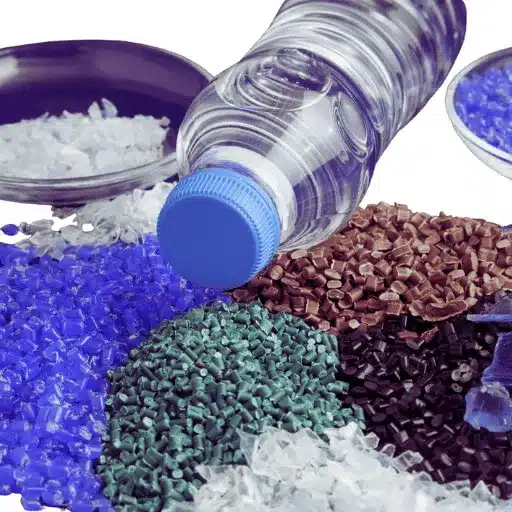ABS or Acrylonitrile Butadiene Styrene is one of the most popular and most flexible thermoplastic materials existing in the manufacturing and mechanical industry. ABS, which is recognized for its toughness, hardness, and excellent wear properties, is used in various applications across different industries, including vehicular and consumer electronic products, which is why a significant amount is also required. This article explores the characteristics that demonstrate ABS as a dependable material, examining its tensile strength, fracture lines, and resistance to damp conditions. This guide, on the other hand, will discuss the properties, outstanding qualities, and, in particular, the uses of the material in the form of ABS. Suppose you’re an engineer in need of Material Datasheets, or a product designer in search of an appropriate polymer for a project, or simply a person who wants to know how things are made. In that case, this article will provide an opportunity to appreciate what ABS actually is and why it has remained so popular in various fields of technology.
Fundamental Properties of ABS Plastic

- Mechanical Strength
The mechanical properties of ABS are particularly outstanding in terms of strength and durability. A high tensile strength is exhibited which enables it to carry large loads without yielding or breaking. That is why it is perfect for uses that require the material to be in tension in any way.
- Impact Resistance
One significant feature of ABS is that it has excellent resistance to impact. The material is designed to prevent breakage due to sudden deformation, a must when handling items such as machine parts, cases, and gadgets that face impact or stress on a daily basis.
- Thermal Stability
The physical temperature range in which ABS has acceptable performance is around 100°C, which can be said to have a medium range of thermal insufficiency. It still has some resistance to oxidation at elevated temperatures, although it might have very little rigidity, which has to be taken into account and a degree of stiffening measures is necessary for these extreme thermal conditions.
- Chemical Resistance
ABS can withstand various acids, alkalis, and oils, making it the preferred choice for industrial and everyday situations where one is likely to encounter chemicals. However, strong solvents can easily destroy ABS; therefore, their role must be taken into account when designing or using ABS.
- Ease of Processing
This material can be injection moulded, extruded, or 3D printed with ease, and thus helps to improve designs when complex shapes need to be created economically.
Chemical Composition of ABS
One of the advantages of the ABS is that it is not a homogeneous structure, but consists of blocks of incompatible polymers. Acrylonitrile plays several key roles; it imparts toughness, hardness and high chemical stability to ABS. It does not allow for internal encapsulations under the action of elevated temperatures and chemicals. Butadiene zones in the polymer matrix function as elastic destroyers and endue it with high impact bending attributes even at sub-zero temperatures. Styrene and its components make the polymer hard, easy to process and giving the possibility of a smooth molding. This allows for the use of the polymer in many industrial applications.
The composition of standard ABS typically consists of about 15% to 35% of acrylonitrile, 5% to 30% of butadiene, and 40% to 60% of styrene, and the blend can be adjusted, depending on the desired properties for various applications. If, for instance, the butadiene content is raised, the impact properties would increase but the stiffness and processability would improve proportionally on increasing the proportions of styrene. These changes in compositions have, over the years, led to the development of ABS grades that will be very good in one aspect, and bad in the other aspects, making it very user-friendly in the automobile and radio electronics spheres.
Mechanical Strength and Tensile Strength
ABS plastic is perceived to be a robust material due mostly to its inherent quality of frictionless force that is crucial for many industrial processes. It has tensile strengths that can go as high as 4100 to 6200 pounds per square inch; that is between 28 and 43 MPa. The principal characteristics of ABS materials that have ample strength are in its being able to endure reasonable deformation or destruction resistance levels. This high level of tensile strength skill from the modified structure of high reproductive polymer of ABS, which takes the brittleness from polystyrene, the toughness from polybutadiene, unlike other polymers that only use the copolymers as a secondary phase. In addition, the properties of the material itself can be beneficial in their design, preventing them from losing form even under impact. Moreover, these properties are further developed in the last but one type of the series based on this plastic material, where adjustment of the ratio of base components is allowed in order to satisfy specific applications. Also, it is important to mention the fact that the mechanical properties of ABS can be well maintained above and below a certain temperature range, which explains why it is considered a suitable material for low and high-temperature uses. Such versatility is crucial in view of the many applications where it has been used efficiently and more so in the manufacture of automobile parts, protective products, and in the layout of structures.
Impact Resistance and Thermal Stability
The reason why such an effect is caused when the ABS copolymer is cooled is due to the more or less continuous fashion the presented physical methods of working on NBR toughened polystyrene are organized. It is the route of this research that allows forming a sophisticated physical model that successfully demands rheological and mechanical properties of this structural material. This, in turn, means that it will be possible to estimate each and every stage of the processing kinetics, such as crystallization of the polymer matrix and alignment of reinforcements. No attention is drawn in the research under consideration to thermal conditions in the inyofigase part meaning the investigation lacks an analytical model of plasticization and magnetic field predisposition.
Additionally, ABS has good features relating to thermal stability. It will stay in shape within such a wide readiness from -20°C to 80°C saturation levels losing track when ordered to do so. The above stability derives from modifying the temperatures during the glass and dynamic states of the polymer to ensure that the plastic has a better mechanical performance. All these prove to be useful when the product is frequently exposed to different operations under repeated heating conditions expected for automobiles. Nevertheless, under such situations, the service life of all components, particularly the bearings that are subjected to maximum stress conditions, is less prone to break down as indicated by the previous problems that are taken into consideration.
Comparison of ABS with Other Materials

When it comes to selecting suitable ABS materials, the options available consist of toughness, resistance to breakage and economy. ABS provides less impact toughness than polycarbonate but it is cheaper for use in general purposes. The advantages of ABS over polypropylene are in the aspects of heat resistance and dimensional stability which make it superior in high temperature and demanding applications. Nevertheless, polypropylene has a great resistance against chemical reactions, whereas acrylonitrile butadiene styrene might have some limitations. As far as engineering is concerned, acrylonitrile butadiene styrene is more popular than polystyrene, especially in areas where there is a possibility of some abuse taking place.
ABS vs PETG: Performance Analysis
|
Parameter |
ABS |
PETG |
|---|---|---|
|
Strength |
High impact strength |
High tensile strength |
|
Durability |
Excellent under mechanical stress |
Good with slight flexibility |
|
Heat Resistance |
Up to 100°C |
Up to 80°C |
|
Chemical Resistance |
Moderate resistance |
Excellent resistance |
|
Ease of Processing |
Easy to mold and machine |
Slightly harder to process |
|
Printing Temperature (3D) |
210-250°C |
220-260°C |
|
Environmental Resistance |
Low UV resistance |
High UV resistance |
|
Transparency |
Opaque materials preferred |
Can be transparent |
|
Recyclability |
Limited |
Better recyclability |
|
Cost |
Generally lower |
Slightly higher |
PLA vs ABS: Strength and Usability
|
Parameter |
PLA |
ABS |
|---|---|---|
|
Tensile Strength |
Higher than ABS |
Lower than PLA |
|
Flexibility |
Low flexibility |
High flexibility |
|
Impact Resistance |
Moderate resistance to impact |
Superior impact resistance |
|
Heat Resistance |
Poor heat resistance |
High thermal stability |
|
Weight |
Lighter compared to ABS |
Heavier than PLA |
|
Durability |
Biodegrades over time |
Long-lasting and durable |
|
Surface Finish |
Smooth, glossy finish |
Matte finish |
|
Odor During Printing |
Minimal odor |
Emits noticeable odor |
|
Biodegradability |
Compostable, eco-friendly |
Non-biodegradable |
|
UV Resistance |
Low UV resistance |
High UV resistance |
|
Adhesion to Bed |
Easy bed adhesion |
Requires heated bed |
|
Post-Processing |
Simple post-processing |
Allows advanced post-processing |
|
Common Uses |
Prototypes, decorations |
Functional parts, industrial use |
|
Availability |
Widely available |
Readily available |
|
Print Speed |
Supports faster printing |
Moderate printing speeds |
|
Cost Efficiency |
Cost-effective for most purposes |
Slightly higher cost |
ABS vs PVC and Nylon: A Comprehensive Overview
|
Parameter |
ABS |
PVC |
Nylon |
|---|---|---|---|
|
Strength |
Outstanding mechanical strength |
High tensile and impact strength |
Superior durability and tensile strength |
|
Flexibility |
Moderate |
Stiff yet impact-resistant |
High flexibility and stretch resistance |
|
Heat Resistance |
Up to 100°C |
Typically high, varies by type |
Exceptional, handles up to 180°C |
|
UV Resistance |
Moderate |
Poor, may degrade over time |
Limited without UV stabilizers |
|
Chemical Resistance |
Resistant to many chemicals |
Highly chemical resistant |
Excellent, resists oils and hydrocarbons |
|
Water Absorption |
Minimal |
Impermeable |
High unless treated |
|
Ease of Processing |
Simple injection molding, 3D print |
Requires careful processing conditions |
Moderate, needs precise process control |
|
Electrical Insulation |
Excellent |
Very high, widely used for insulation |
Good, but varies with moisture |
|
Cost Efficiency |
Versatile and affordable |
Low manufacturing cost |
Higher cost compared to ABS and PVC |
|
Applications |
Consumer goods, auto parts |
Pipes, coatings, construction |
Gears, bearings, textiles |
Common Applications of ABS Plastic

Due to the compressive strength, high impact resistance, and general versatility of ABS plastic, it is widely used in most commercial field applications. Such undertakings include the following:
- Automotive Industry: Various parts like the dash, seat backs, and bespoke trim can be made of this material as it will easily conform to the design and last long.
- Consumer Electronics: This is in the weight-saving and thermal-isolation capabilities of such things as laptop cases, cell phone bodies, and TV covers
- Household Goods: Found in kitchen appliances, toys (e.g., LEGO bricks), and storage solutions because of their durability and aesthetic finish.
- 3D Printing: Frequently used in prototyping and manufacturing processes due to its ease of shaping and post-processing.
There is still a prevalent application of ABS in the design purpose of products because the factors of toughness, flexibility, and affordability can be balanced more effectively.
Automotive Industry Uses
- Interior Components: Gaining much preference for its fine finish appeal and lightweight properties, ABS is indeed an important material for dashboards, door panels, trims, and other applications. Additionally, the material is easy to work with due to these properties which make it an instant hit with the consumers. Lastly, the materials do not get spoiled when used in varying interior conditions thanks to their good heat resistance.
- Exterior Parts: It is appropriate for use in the installation of certain vehicle components such as side mirrors, front screens, front panels, and various protective or decorative trims. The performance of ABS in such a use is supported by its very good outdoor stability as well as protection against the harmful action of sunlight.
- Bumpers and Protective Panels: The toughness of ABS impact resistance has made it suitable for use in bumper and protection of door sides. These features are necessary in order to ensure nondestructive energy release during minor impacts and thus the improvement of car safety.
- Under-the-Hood Components: Some modified ABS grades capable to withstand heat are used to produce such less stressed automotive components as shields, filling containers and the like.
- Electrical Housings and Components: ABS has excellent electrical insulation properties, making it possible to clad electric structure elements such as fuse boxes and battery boxes according to the applications.
- Lightweighting Solutions: The auto business has a substantial focus on cutting down the weight of automobiles to benefit from reducing the energy consumed. The ABS plastic is commonly used as a sleek material since it is very resistant and maintains its build-up very well even without a heavy load.
Construction Applications
- Piping Systems: ABS is very often used in plumbing installation including drainage and vent piping, because it is very chemical resistant, and it can withstand very low temperatures too. It is supplied in various sizes, and a 400 mm ABS pipe, according to one supplier, withstands temperatures as low as -40° F, and some ABS materials are generally resistant to most product corrosion.
- Fittings and Fasteners: Those used in construction, wherein pipe fittings, valves, and fasteners are all manufactured using this material, proving to be popular among construction materials. The great durability and efficiency it contains make it the first choice of materials for this use.
- Window and Door Frames: Because ABS is strong and resistant to sunlight, it is one of the most common materials used in making uPVC frames for windows and doors aiming to serve a long lasting purpose that require a good deal of sun exposure and heavy temperature changes.
- Construction Equipment Components: A significant number of construction equipment and tools are used for casing robust products that often require strong ABS material to help cushion off external forces.
- Interior Finishes: ABS finishes are a must for surfaces and borders that are meant for beautification and protection due to their ability to be easily and quickly trimmed and installed, and have features that do not wear out.
Consumer Goods and Electronics
Factors Affecting ABS Performance

- Environmental Conditions
It is worth noting that the performance of acrylonitrile butadiene styrene (ABS) is influenced by several environmental conditions. High levels of heat can impact the material and cause it to lose its resistance to impact, leading to bending or deformation over time, and in the presence of high levels of UV radiation, discoloration and surface degradation occur. Consequently, to reduce such ill effects, the adequately chemically treated materials are typically added with such neat components as UV stabilizers.
- Mechanical Stress
Mechanical loads of stresses during operations have negative effects on the strength of ABS. Apolleition loads and causes, which in process result in fatigue crack growth, especially in thin sections or portions that carry a design weakness. It is imperative that the design be adequately enhanced and forced out cracks and stress distribution enhanced for the performance to be enjoyed.
- Chemical Exposure
Its high glass transition temperature in the rubbery phase, above it, makes it possible to employ higher molding temperatures. Nonetheless, governing the velocity control of molding process due to ABS’s sensitive nature [due to the temperature regime restrictions] cannot be ignored which results in poor bonding whilst employing glue or welding after the plastic has been molded.
- Processing Parameters
Impact of Heat and UV Exposure
The physical characteristics and life expectancy of ABS materials (Acrylonitrile Butadiene Styrene) are highly dependent on exposure to heat and ultraviolet (UV) radiation. Perennial exposure to heat is detrimental as it can induce thermal oxidative effects which break down the polymer matrix, as a result reducing the structural properties of the material. Such a process may diminish tensile strength capability and make the material brittle, which in turn may restrict its use for high-performance applications.
UV radiation increases the speed of the photo-oxidative degradation process as it interacts with high-energy photons to a greater extent. In the process, radicals will be formed, which will catalyze the cession of a polymer chain or even cross-linking. Further exposure of these materials to UV light can make them lose luster, display discoloration on their surface, and retard impact resistance. To improve the performance of ABS in terms of color and impact, it is sometimes done by adding other functional additives, for example, the inhibition of amines, or by applying protective inks, even if the object is placed under direct and cyclic weather extremes.
Another common use of assessment of the stability of materials in the light of this treatment particularly in specific industries such as automotive or outdoor equipment industry,, it is significant top consider heat and UV together as two factors instead of the use of one of them alone.
Chemical Interactions and Effects
The modification of the processes and properties of ABS due to the effects of various environmental and chemical actions is one of the most common factors that result in alterations in ABS properties and its performance. Of these, one of the very important interactions is that of oxidation triggered by ultraviolet degradation. The ultraviolet degradation can, over time, deplete the butadiene constituent in the ABS, hence giving rise to microcracks, discoloration, and a reduction in toughness. Also, with exposure to some particular solvents like acetone or toluene, swelling, softening, or surface cracking of the polymer occurs as a consequence of the mechanisms of ABS solubility.
Thermal cycling and chemical exposure aggravate the existing internal stress and stress-coating behaviour, or the rate of molecular degradation within the material. Statistical trends actually show that the presence of water and oxygen under high temperatures promotes an increase in the decomposition reaction of materials. The introduction of stabilizers, for example, antioxidants, ultraviolet or UV light absorbers, and considering the chemical behavior in the design and operation phases, is necessary for the purpose of minimizing the effects generated. It brings about the confidence that the systems will perform better and their utilization will be extended within such challenging working environments.
Practical Examples of ABS Versatility

- Automotive Industry: The Acrylonitrile Butadiene Styrene (ABS) is extensively utilized in the interior and exterior automotive systems including dashboards, interiors and exterior cladding, and bumper materials. Being impact resistant and easy to carry, ABS plays a crucial role in enhancing the safety of vehicles as well as cost control.
- Consumer Electronics: Among the many materials to be used in the development of laptop bodies, keyboards, and mobile phone protection shields is acrylonitrile butadiene styrene (ABS) due to its workability and resilience.
- Appliances: Similarly, as for the achievement, within a lot of household devices, components of various shapes, say dust bags of the vacuum cleaner, water tank of the coffee machine, refrigerator linings among several other – have to be manufactured using ABS plastic, which has appropriate impact strength, chemical resistance, and can be moulded easily.
- 3D Printing: Inside the maker of computer 3D printers systems, most of the parts are made of ABS due to their obvious advantages. The common mix of acrylonitrile-butadiene-styrene that is used in the overall structure of 3D printers is molded. These printers are also called additive manufacturing printers.
- Construction: ABS finds utility in pipe systems, fittings, and protective housings due to its corrosion resistance and ability to perform under a range of environmental conditions.
Real-World Applications Highlighting Reliability
- Automotive Components
One of the common uses of ABS in the automotive industry is to produce dashboards, wheel trims, and interior linings among others. The automotive industry is diverse and includes automotive parts used in different contexts. The parts are required to bear impact strength as they need to undergo varying temperatures of an environment while in motion. Practical experiments have shown that even at negative temperatures of -20°C to 80°C, the ABS retains its integrity, hence is hard to deform.
- Consumer Electronics
ABS covers are also commonly used in several types of devices, such as smartphones, laptops, and household equipment. The reason being that such materials provide the provision for heat insulation, while also being tough to protect the expensive components from thermally induced stress. In the same way, a generic finding is that 75% of small ‘commercial’ electronics have their shell or outer casing made of ABS.
- Healthcare Equipment
As per medical devices, ABS is widely used for making medical devices that need to be lightweight, sterilizable, and durable. This includes nebulizers, injection control devices as well as the casings of diagnostic equipments. They can survive the rigors of the sterilization process as well as harsh chemicals due to the material and thus get preferential treatment in clinics and hospital systems, including theatres and intensive care units.
- Toy Manufacturing
A favourite material for making large quantities of toy components of impeccable quality is Acrylonitrile butadiene styrene or ABS. Colour choices are never limited – the bright, happy colours are maintained on ABS, it is safe for children, and its tough properties ensure that the toys pass all safety requirements. A significant proportion of production data on ABS toys shows that the toys have the ability to hold significant weights of up to 15lbs and beyond, without the breakage or cracking of the toy in any way.
- Industrial Prototypes and Functional Parts
ABS is increasingly becoming a popular material in 3D-printing prototypes and a variety of working mechanical parts. It is a versatile material with high tensile strength and machinability (approximately 4,000 – 6,000 psi), which makes it withstand stress testing in operational conditions with no worries. This has made it popular in settings such as aerospace, robotics, and manufacturing equipment.
Future Trends and Innovations in ABS Use
The development of Acrylonitrile Butadiene Styrene or ABS in the future will depend heavily on research progress in material technology and new methods of production, for ABS mouldable plastics may become stronger when combined with carbon or glass mat. These are composite materials used in high-tech spheres such as automotive, where there is occasionally a high demand for stiffer, lighter materials.
One other trend coming up is the intervention of ABS in additive manufacturing to enable complex shapes and multi-part over a broad range. Polishing and finishing such systems would require lots of cleaning and assembly. This is enhancing the need to reduce labor costs and waste. The growth in materials science 3D printing is a result of the new technologies based on hybrid deposition and improvements in advanced techniques with the extrusion process.
Since the attitudes towards environmental conservation are changing, there are also other flexible factors favouring the innovation of ABS production. More precisely, the investigation of bio-based ABS polymeric materials, which are from plant sources, is leading to a decrease in the use of non-renewable raw materials. Apart from creating new systems of implementation such as recycling in order to totally circulate abs, it seems that efforts are also being undertaken to upgrade material recycling operations better.
Reference Sources
-
“3D Printing Techniques: Transforming Manufacturing with Precision and Sustainability”
- Key Findings: This study explores advancements in 3D printing materials, including ABS, PETG, and PLA. It highlights how these materials have improved precision and sustainability in manufacturing. ABS is noted for its durability and adaptability in various applications.
- Read more
-
“Additive Manufacturing: Is It a New Era for Furniture Production”
- Key Findings: This paper examines the use of ABS in furniture production through additive manufacturing (AM). ABS is identified as a commonly used material in FDM (Fused Deposition Modeling) due to its strength and ease of use.
- Read more
-
“Characterization of ABS Material: A Review”
- Key Findings: This review provides a detailed theoretical study of ABS material, focusing on its thermal decomposition, metallization effects, and polymeric varistor properties. It emphasizes ABS’s versatility and strength in daily applications.
- Read more
Frequently Asked Questions (FAQs)
Q: How strong is ABS compared to other filaments?
A: ABS is known for its strong and durable properties, making it a popular choice among 3D printing materials. It has a tensile strength ranging from 30 to 50 MPa, which allows printed ABS parts to maintain their integrity under stress. When comparing ABS to materials like PLA or PETG, ABS typically offers better impact resistance and durability, especially at higher temperatures. This unique combination of strength and flexibility makes ABS suitable for functional parts in various applications. However, the choice between ABS or PETG may depend on the specific needs of your 3D printing project.
Q: What are the properties of ABS that make it suitable for 3D printing?
A: ABS has several inherent properties that make it a favored material in the 3D printing process. Its good impact resistance allows for the creation of robust plastic parts that can withstand everyday use. Additionally, ABS filament provides good heat resistance, enabling it to perform well in high-temperature environments. The ease of printing with ABS is also a significant advantage, as it can be printed without a heated bed, though it is recommended for better results. Overall, the material properties of ABS, including its strength and rigidity, contribute to its widespread use in 3D printing.
Q: How does the strength of 3D printed parts made from ABS compare to PLA?
A: The strength of 3D printed parts made from ABS is generally superior to those made from PLA. While PLA is easier to print and has a lower melting temperature, it tends to soften under heat, which limits its applications. In contrast, ABS parts can maintain their strength at higher temperatures compared to PETG, making them more suitable for functional and structural applications. The impact resistance and durability of ABS allow for a balance of strength that PLA does not provide. Therefore, for projects requiring strong and durable parts, ABS is often the preferred choice over PLA.
Q: Can ABS be recycled and still maintain its strength?
A: Recycled ABS can still maintain a good level of strength, although it may not be as robust as virgin ABS. The properties that make ABS strong can diminish when the plastic is reprocessed, resulting in a slight reduction in tensile strength. However, advances in recycling techniques have improved the quality of recycled ABS, allowing for a balance of strength and sustainability. When using recycled ABS filament, it’s essential to consider the source and quality of the material to ensure it meets the required specifications for your 3D printing project. Overall, while recycled ABS parts may have some limitations, they can still serve as a viable alternative for various applications.
Q: What is the impact resistance of ABS compared to PETG?
A: ABS is renowned for its impact resistance and durability, often outperforming PETG in this regard. While both materials exhibit good impact resistance, ABS’s unique combination of strength and flexibility allows it to absorb shocks better. This makes ABS a preferred choice for applications where parts are subject to mechanical stress or potential impacts. On the other hand, PETG is known for its better clarity and chemical resistance, making it suitable for different applications. Ultimately, the choice between ABS and PETG will depend on the specific requirements of the project, including the desired strength and environmental factors.




















